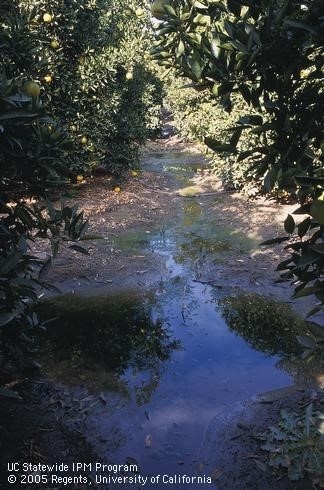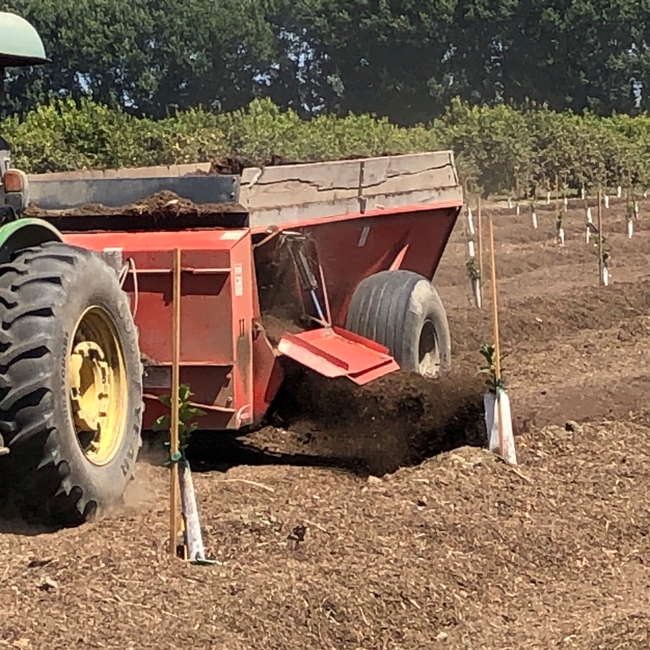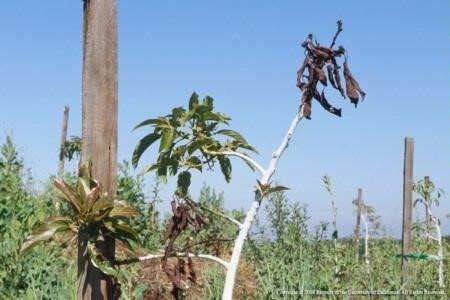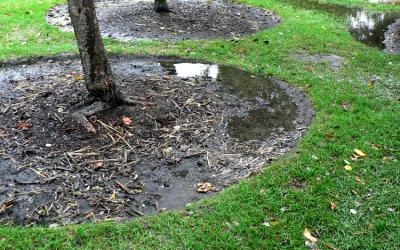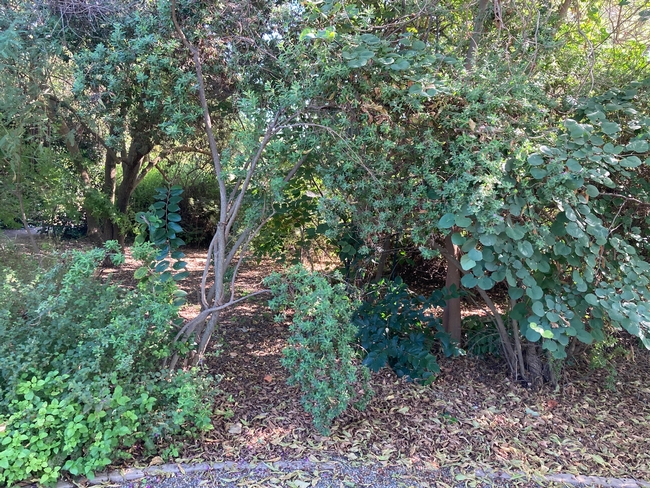- Author: Ben Faber
What Can Happen With Too Much Rain? Watch that Mulch!!!
Rain is wonderful stuff. If it comes and washes the accumulated salts of the last several years out of the root zones of citrus and avocado, that's a good thing. But what happens if there is a little too much of the good stuff? In the winter of 2005, Venture got over 40” of rain, which is 200% of what is normal. The last time big rains occurred prior to that was in the winter of 1997-98. That year the rains were evenly spaced on almost a weekly basis through the winter and into the late spring and over 50" fell. That year we had major problems with both citrus and avocados collapsing from asphyxiation. The same occurred in 2005, but not so pronounced.
Rain is good, right?
In 2003 we had a lot more rain than we normally see and in Carpinteria it rained 4 inches in July!!!!!! In some young trees with poorly developed root systems, we have seen some collapse from asphyxiation. Avocados tend to be more susceptible than citrus, and some rootstocks more than others. Even big trees collapsed.
Asphyxiation is a physiological problem that may affect certain branches, whole limbs or the entire tree. Leaves wilt and may fall, the fruit withers and drops and the branches die back to a greater or lesser extent. The condition develops so rapidly that it may be regarded as a form of collapse. Usually, the larger stems and branches remain alive, and after a time, vigorous new growth is put out so that the tree tends to recover. Young trees can be harder hit, but sunburn damage from lack of leaves may be more of a problem.
Asphyxiation is related to the air and water conditions of the soil. The trouble appears mainly in fine-textured or shallow soils with impervious sub-soils. In 1997-98, this even occurred on slopes with normally good drainage because the rains were so frequent. When such soils are over-irrigated or wetted by rains, the water displaces the soil oxygen. The smaller roots die when deprived of oxygen. When the stress of water shortage develops, the impaired roots are unable to supply water to the leaves rapidly enough and the tree collapses. The condition is accentuated when rainy weather is followed by winds or warm conditions.
It doesn't take standing water to have asphyxiation occur.
Mulch is good, right?
It can get spread awfully thick
Mulch does lots of good things, like reducing erosion, controlling weeds, improving infiltration, increasing organic matter to control root disease, reducing soil temperatures, reducing evaporation loss and therefore improving soil moisture content. Ah, but that is a problem when there is a lot of rain. It can lead to asphyxiation, just because of that last point. In rainy conditions, there needs to be a period of air entry into the soil and mulch because it reduces evaporative loss can keep the soil TOO wet, leading to asphyxiation.
Asphyxiated tree that has been overmulched and is now recovering after whitewashing.
So what do you do? With a thick layer of mulch when there is too much rain? You pull it away several feet from the base of the tree, so that sun can dry out the soil. It's a lot of work, especially after you have put a lot of work into spreading it.
The roots need to dry out and it can only happen if exposed to light and wind and ambient temperature
On flat ground, your avocados are planted on mounds or berms. And the soil texture is somewhat sandy and well drained. In that case, unless we get rain like 1997-98 when Ojai got nearly 50 inches and it rained just about every week from November through April and it seemed everything was under water, most trees should be all right. But, this last rainfall year I saw cases where unbermed, heavy soil avocado plantings had severe asphyxiation problems. So be forewarned.
- Author: Elinor Teague
The look of neighborhood yards has changed radically these last years. Landscape designs that feature highly-manicured, constantly trimmed, raked, and groomed lawns and planting beds are disappearing, by necessity. Traditional formal plantings (visualize rose beds inside boxwood hedges) are being replaced by drought and heat-tolerant California native and pollinator-friendly plants and trees better suited to our Central Valley climate and better able to survive extreme heat spikes as well as the high winds and heavy rainfall that come with atmospheric river 'bombs.'
Mulches are always recommended as covers for bare soil in the landscape for water conservation, soil temperature moderation and weed prevention, but the thinking on mulches is changing. Wood chip, straw and cedar shaving mulches are expensive and they release minor amounts of nutrients into the soil as they decompose. Leaf mulches from your own well-established trees or your neighbors' trees contain 50 to 80 percent of the nutrients the tree extracts from the air in a season.
The rapid composting method is one easy way to create leaf compost, but leaves that have not yet been composted can also be used as mulches. Leaves that fall from some deciduous large landscape trees (Japanese maples, liquid ambars, Chinese pistache) can actually be left intact to use as mulch underneath the trees. Lighter-weight leaves will break down fairly quickly during the fall and winter months.
Rake or spread the leaves to maintain an even depth of about two inches. Thicker layers of whole leaves can block water and oxygen as the leaves break down and become compacted. You can add more leaves as the leaf layer breaks down.
Leaves from evergreen broadleaf trees like Southern magnolia and California bay take longer to break down and should be shredded before being used as mulches. A three- to six-inch layer of shredded leaves is optimum underneath the trees' canopies.
Use a mulching mower to shred the leaves or a shredder. Shredders are now smaller, lighter and less expensive. The one-time cost of a shredder or mulching mower will soon recoup the repeated expense of buying mulches every planting season.
Shredded leaves can be used as a one-inch deep mulch layer on lawns. Spread the leaves thinly so that the grass blades show through. Add a two- to three-inch layer of shredded leaf mulch to cover your planting beds in winter, keeping the mulch a good four inches away from stems and trunks to prevent rot.
By spring the leaf mulch will have turned to nutrient-rich leaf mold that can be dug in as a soil amendment. Uncomposted leaf mulch will be host to many insects, insect eggs and pupae including butterflies, moths, spiders, ants and beetle species. Remember to leave some areas of bare unmulched soil in your garden to provide habitats for ground-nesting bees.
Leaves from trees that have had fungal problems (anthracnose, fireblight) or pest insect infestations (whiteflies, scale, aphids) should not be used as mulch. The wintertime decomposition process will not create enough heat to destroy fungal spores or pest insects and their eggs.
Sources:
www.familyhandyman.com/article/leaf-mulch
https://xerces.org/blog/midwinter-tasks-for-pollinator-gardening
- Author: Ali Williams
- Editor: Maggie Mah
- Editor: Cynthia Nations
enticing and the task seems simple enough: just lay it on the soil, cover with an attractive layer
of mulch and the foul demon weeds that lie in wait will wither and die in the darkness. At last,
you will be free from the tyranny of weeding! Hang on--there's more you should know about
this stuff! Although the promise of a neat, easy to maintain landscape may be hard to resist, the
reality isn't quite what it's cracked up to be, and you may end up doing more harm than good.
scale agriculture operations and to provide stability for structures such as retaining walls. Weed
Manufacturers claim that the materials are permeable, help to retain moisture, prevent weeds
from growing, and can therefore reduce the need for chemical herbicides.
Does it work? Landscape fabric does help to suppress weeds, but the effect is only temporary.
When freshly laid down, fewer weeds will appear on the surface because seeds that are already
opportunistically seek tiny holes in the fabric and utilize pinpoints of light to sprout through the
fabric-mulch layer and emerge triumphantly on the surface. You might admire their tenacity
before pulling them out but unfortunately, the tough fabric covering makes it difficult to get at
the root--a crucial aspect in the battle against weeds. Most likely, a bigger hole has also been
created in the process, making it easier for more weeds to germinate.
Is it permeable? Landscape or “weed blocking” fabric is made of tightly woven fiber, usually
polyester or plastic, both of which are derived from petroleum. There are different grades and
thicknesses, which will have correspondingly different degrees of permeability. Initially, they
are somewhat porous, allowing a certain amount of water and air to move through the fabric.
Unfortunately, permeability decreases in short order as the small holes that create porosity
gradually become clogged with dirt and debris. This is where the trouble starts.
What goes on below the surface? While not visible to the naked eye, healthy soil teems with
billions of beneficial organisms that depend on the movement of water and vital gases (oxygen,
carbon dioxide) between the atmosphere and the soil. As permeability decreases, these
components become more and more restricted. Deprived of oxygen, carbon dioxide and water,
soil microorganisms die off, leading to a downward cycle. Natural processes start to shut down
and plants start to appear less and less healthy. Once uncovered, the degraded soil may appear
cracked, compacted, and will very likely smell rotten. This is because the natural process of
decomposition has been interrupted and the healthy microbial community has died off.
Rooting for roots. Plants that are surrounded by increasingly clogged landscape material have a
hard time, too. Vegetation that is planted in good, properly irrigated soil grows deep roots in
the process of seeking out nutrients and moisture. This leads to healthy plants that are more
resilient to stress. Conversely, plants that are surrounded by a cover of landscape fabric (which
can be bone dry even after a deep, soaking rain) soon spread their roots out closer to the
surface. Eventually, roots may appear at the edge of the landscape fabric but despite a
gardener's best efforts, plants in this scenario will not do well.
Mulch: always good? Landscape fabric is often topped with a layer of organic mulch such as
wood chips. Although mulch is normally a very good thing and a top dressing of it certainly
looks more attractive than naked landscape fabric, it can't do what it does when it is in direct
contact with the native soil and becomes counterproductive. Why? Instead of the usual process
of decomposing and adding valuable organic matter to the soil, the mulch particles just break
down on top of the fabric and add more particulates to clog things up even more.
Still in the weeds? If you are determined to get the upper hand in the battle against weeds,
consider sheet mulching and other beneficial practices that will minimize time and effort and,
at the same time, help your garden to thrive.


Mulching Perennials
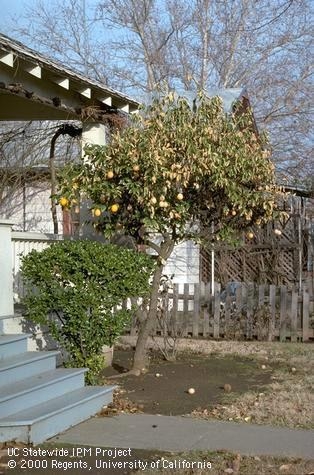
Trees and Shrubs
Trees and shrubs usually have an easier time getting through the winter if they are in good shape. However, if a freeze is forecasted, one of the most important things to do is to ensure they have been watered 2-3 days prior, especially if autumn has been dry. As with perennials, mulching with fallen leaves or other mulch will help protect the roots, but do not have mulch up against the tree trunk or plant stem, which could cause rot to occur.
Wrapping trunks of young trees with blankets, towels or piping insulation will provide added protection.
Bulbs
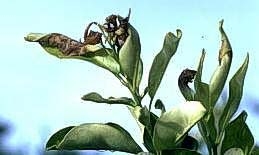
Wait until after the first frost, then gently dig up the bulbs or tubers. Cut away any leaves and brush off as much soil as possible. Let them dry out in a cool spot for about a week. Label them so you'll remember what they are! Pack them in a breathable box, such as a cardboard box, storing the bulbs so they don't touch each other, and cover them in sawdust or shredded newspapers. Keep them in a cool, dark location that is below 45°F, but doesn't freeze.
Citrus
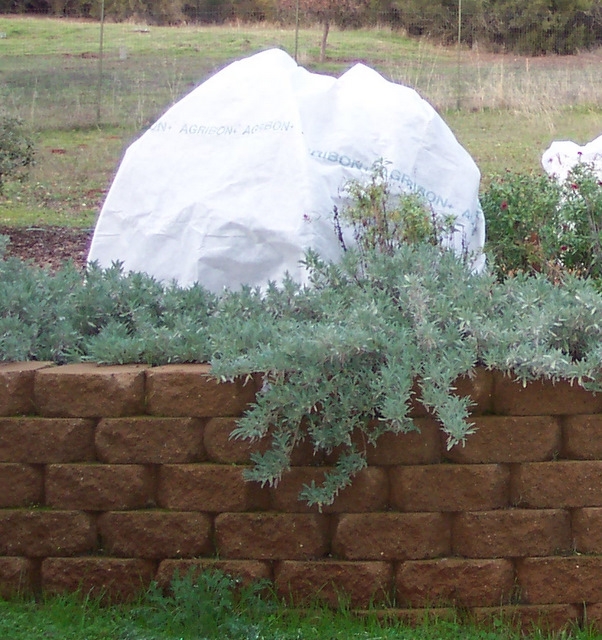
Citrus plants can be protected by frost cloths which allow some light and air to penetrate and can stay on plants for a few days at a time. They can also lay directly on plant foliage. If you use other type of cloth such as burlap or cotton sheets, use stakes to hold the cloth away from the plant greenery. Remove it during daytime when temperatures are above freezing and sunny, and replace it each night prior to sunset. Whatever cloth you use, make sure the cloth goes all the way to the ground to capture radiant heat from the ground. If there is mulch around the plant, rake away during the day, if above freezing and sunny, to allow the soil to warm up.
Roses
Some roses are more sensitive to cold than others. As a group, hybrid tea roses are the most vulnerable. Make sure they are watered prior to predicted freezing temperatures, protect the root zone with mulch on the soil mound. You may also wish to cover your sensitive roses with frost cloths.
Container Plants
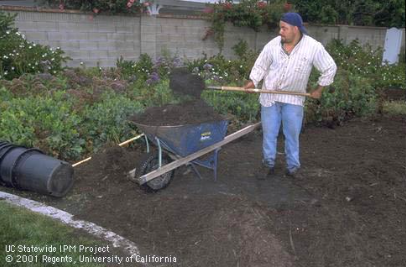
What do do if frost damages your plants? Wait!
Frost damage occurs when the water inside the cells of a plant freeze, causing damage to the cellular walls, which harms the overall health of the plant. Frost damaged vegetation will wilt, turning brown or black, as if they have been scorched. The bark may crack, or split. In severe or prolonged periods of frost the plant can die.
If you see what appears to be frost damage, wait until late spring until all chance of frost has passed. Plants are resilient and can often recover on its own, producing new growth. Pruning what seems to be damaged branches too soon can cause significantly more trauma, even death, to a vulnerable plant that might otherwise have recovered in the spring.
Resources
- https://ucanr.edu/blogs/blogcore/postdetail.cfm?postnum=22929
- https://sacmg.ucanr.edu/Frost_Protection/
- https://ucanr.edu/blogs/blogcore/postdetail.cfm?postnum=45517
- http://ipm.ucanr.edu/PMG/GARDEN/ENVIRON/frostdamage.html
Denise Godbout-Avant has been a UC Cooperative Extension Master Gardener in Stanislaus County since 2020.
Does growing a vegetable garden sound like something you'd like to do, but you don't feel equipped? So, here's the deal. Find some dirt, and then plant. It's that simple. If you want to grow food, the first step is to find some dirt. Consider the usable ground you have. Take a look around. Maybe it's that patch of front lawn that you're tired of mowing, or haven't mowed at all. Could it be the bare spot in the back where the dog likes to poop? Step One is to find some dirt, and don't be judgy about the dirt you have. Your dirt is full of potential.
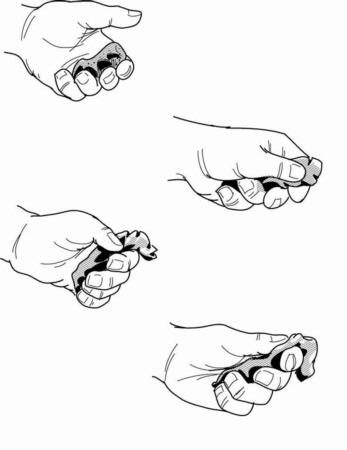
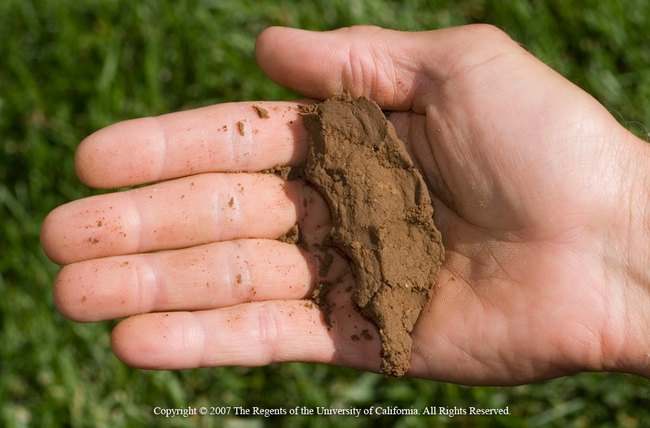
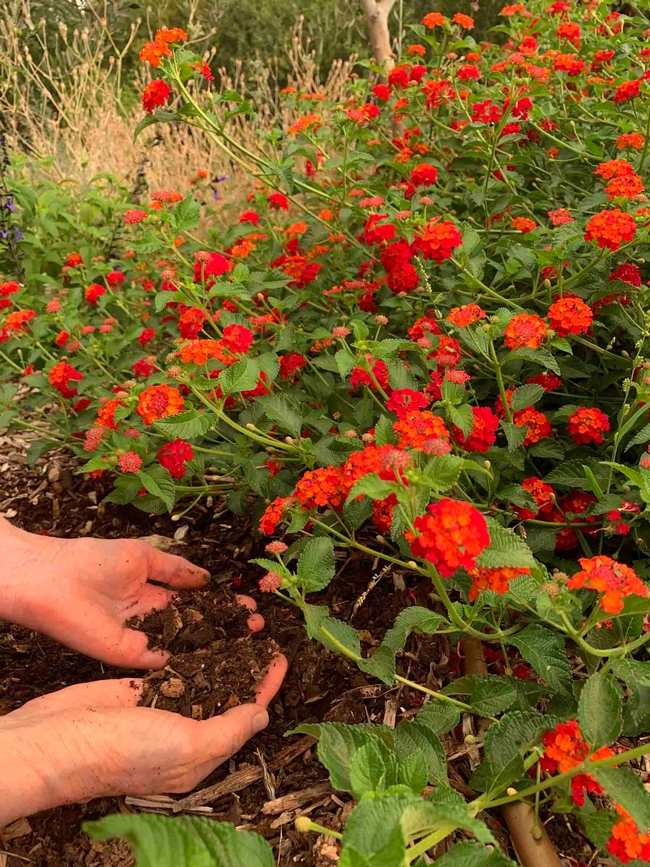
Your objective is to give your dirt some tender loving care, and your soil will return the favor by giving you healthier plants and better produce. Your soil's mineral composition is what it is, but one element we can be altered is organic material. No matter what kind of dirt you have, adding organic matter will make it better. Organic materials include grass clippings, fallen leaves, straw, wood chips and bark, hulls, plant clippings (chopped small) and everyone's favorite...manure. Now, here's an important point: it takes time for the organic materials to break down and start to enrich the soil, to become usable to plants. So, what's the best and quickest way to get those things into your soil? Compost. Compost is already mostly decomposed organic matter, so it mixes into the soil and continues to decompose slowly, releasing nutrients to plants and improving soil texture. Compost costs money, but you can also make your own in as little as 2 to 3 weeks at little or no cost. This article has a complete description of DIY compost: Compost in a Hurry (UC ANR Publication 8037).
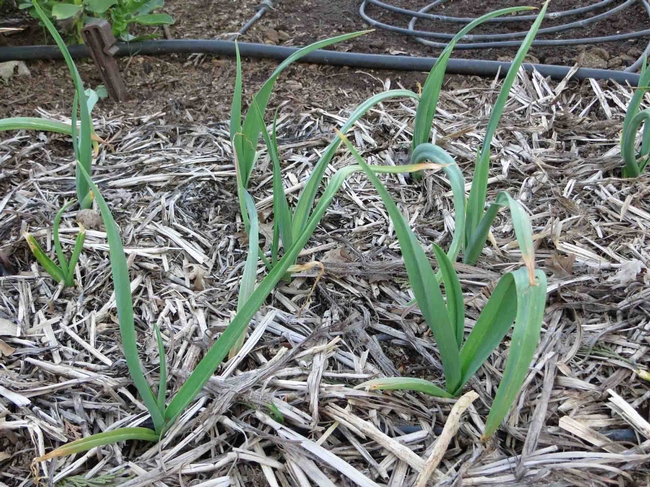
Think of mulching as another method of composting that involves placing a thick layer of organic matter on top of the soil and letting it decompose very slowly. It's even better to put a layer of newspaper or cardboard on the ground first, wet it, and then spread out the organic material on top, about 4 inches thick. The organic matter and the paper or cardboard underneath will break down over the next 6 to 10 months. To add plants, push aside the mulch, expose the paper or cardboard, and cut an "X" large enough to accommodate your plant. Fold back the flaps, dig a hole, and add your plant. When done, lay the flaps back in place and re-cover with mulch. Remember that front lawn that you're thinking could be a vegetable garden? This method of sheet mulching is one way you get rid of the grass! Cover it, mulch it, forget about it. If you want to learn more about lawn removal, here's an article containing complete instructions: Lawn Removal: Do It Right.
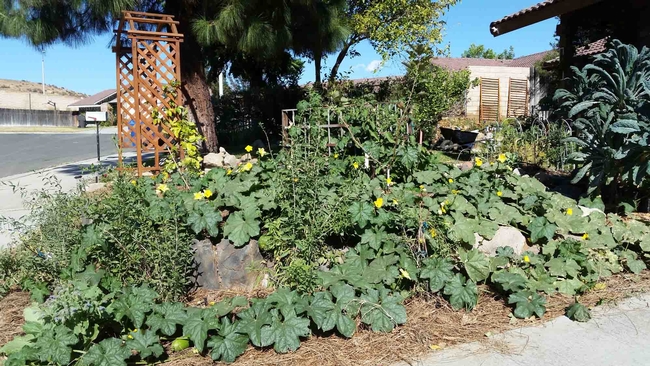
UC Master Gardeners of Butte County are part of the University of California Cooperative Extension (UCCE) system. To learn more about us and our upcoming events, and for help with gardening in our area, visit our website. If you have a gardening question or problem, email the Hotline at mgbutte@ucanr.edu or leave a phone message on our Hotline at (530) 538-7201. To speak to a Master Gardener about a gardening issue, or to drop by the MG office during Hotline hours, see the most current information on our Ask Us Hotline webpage.

